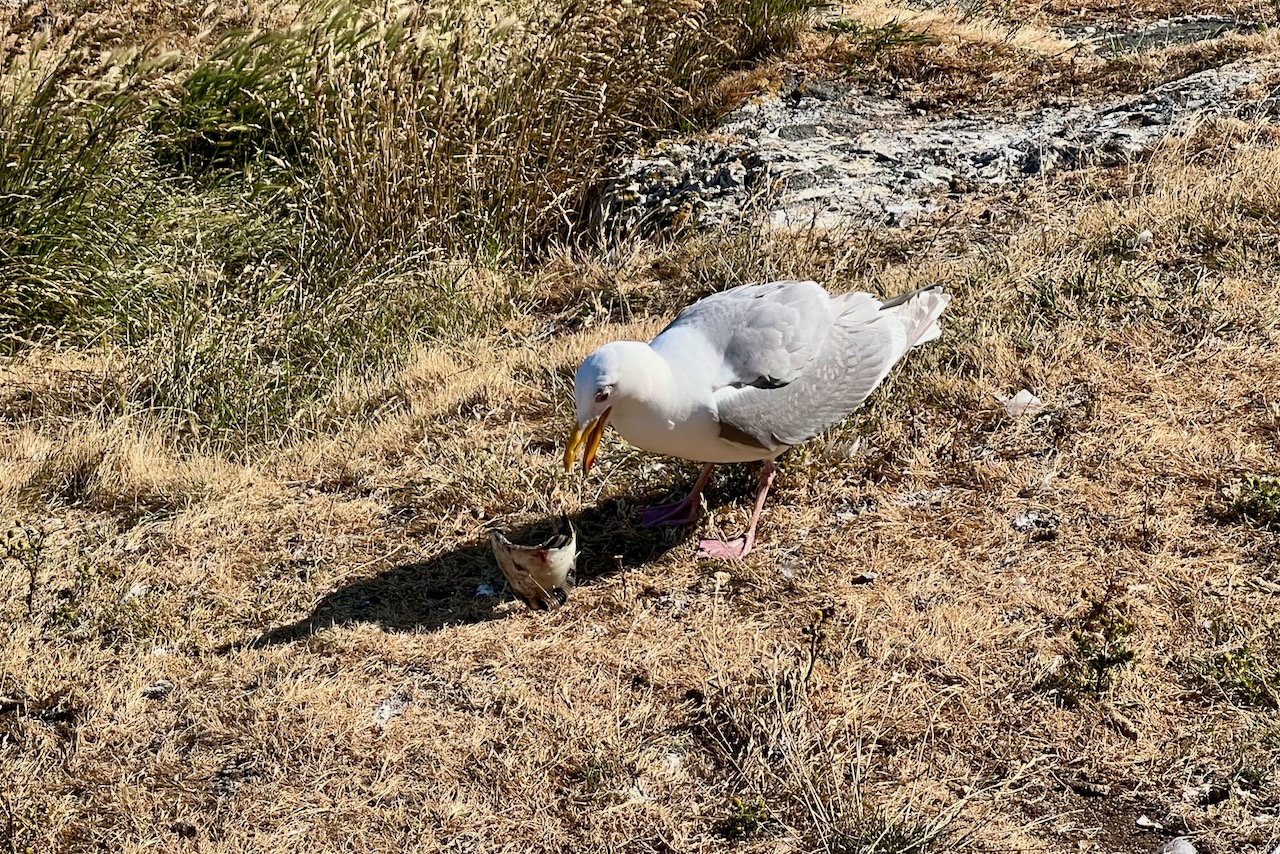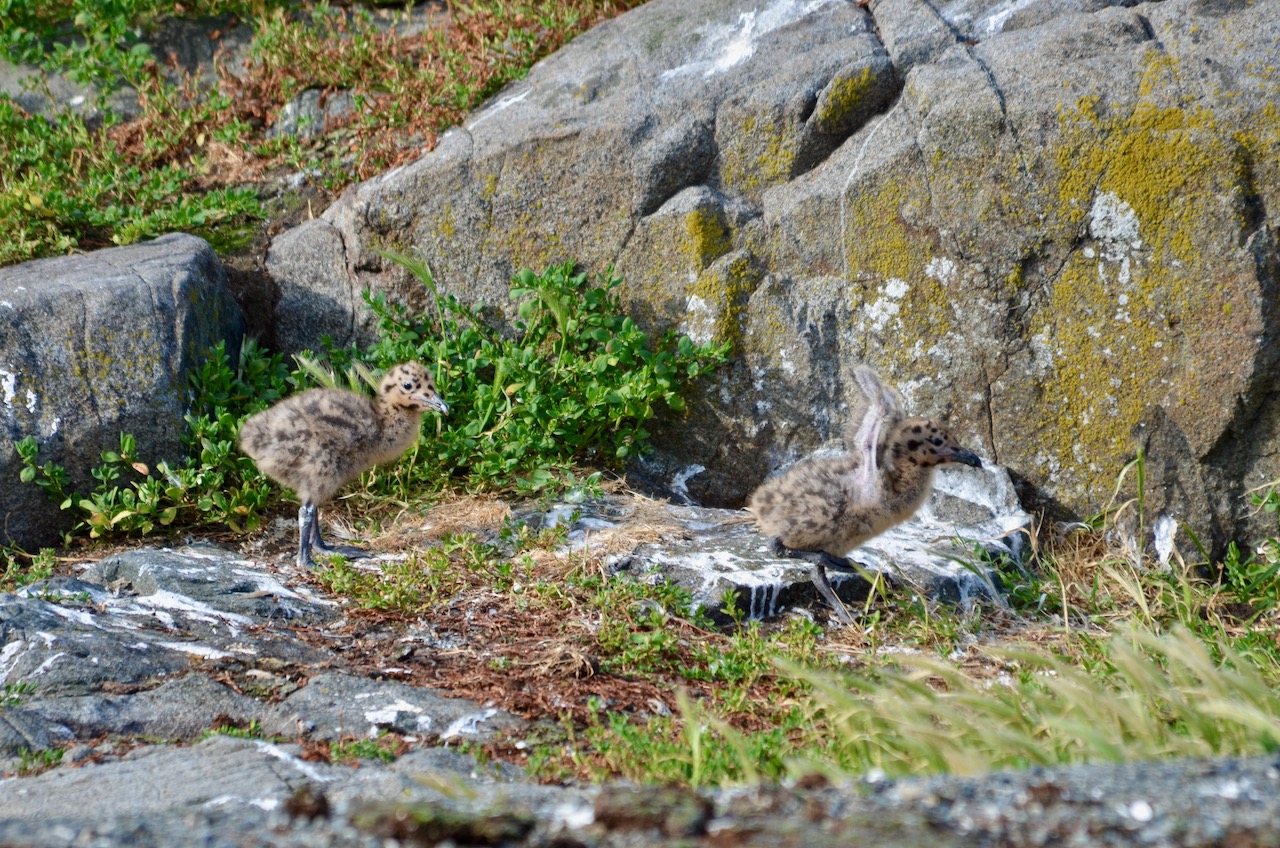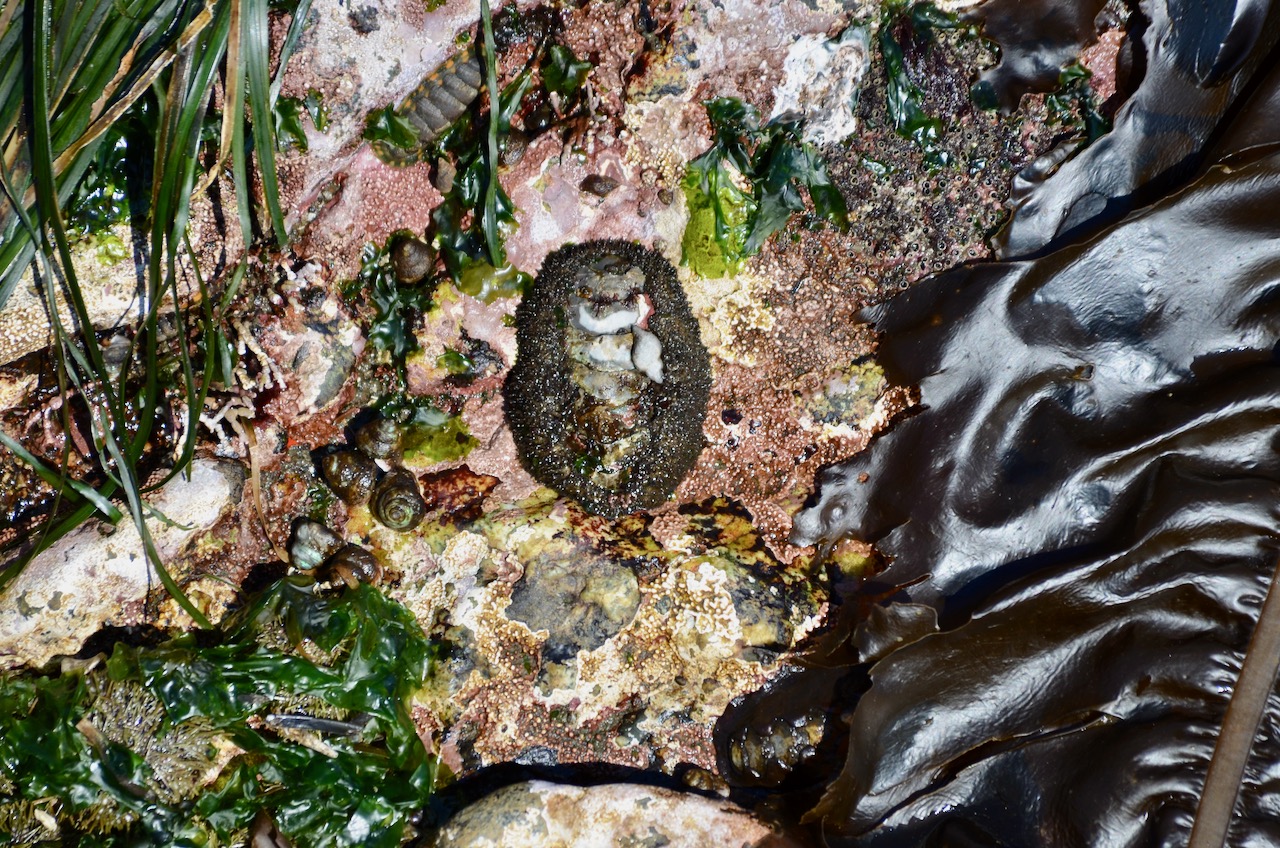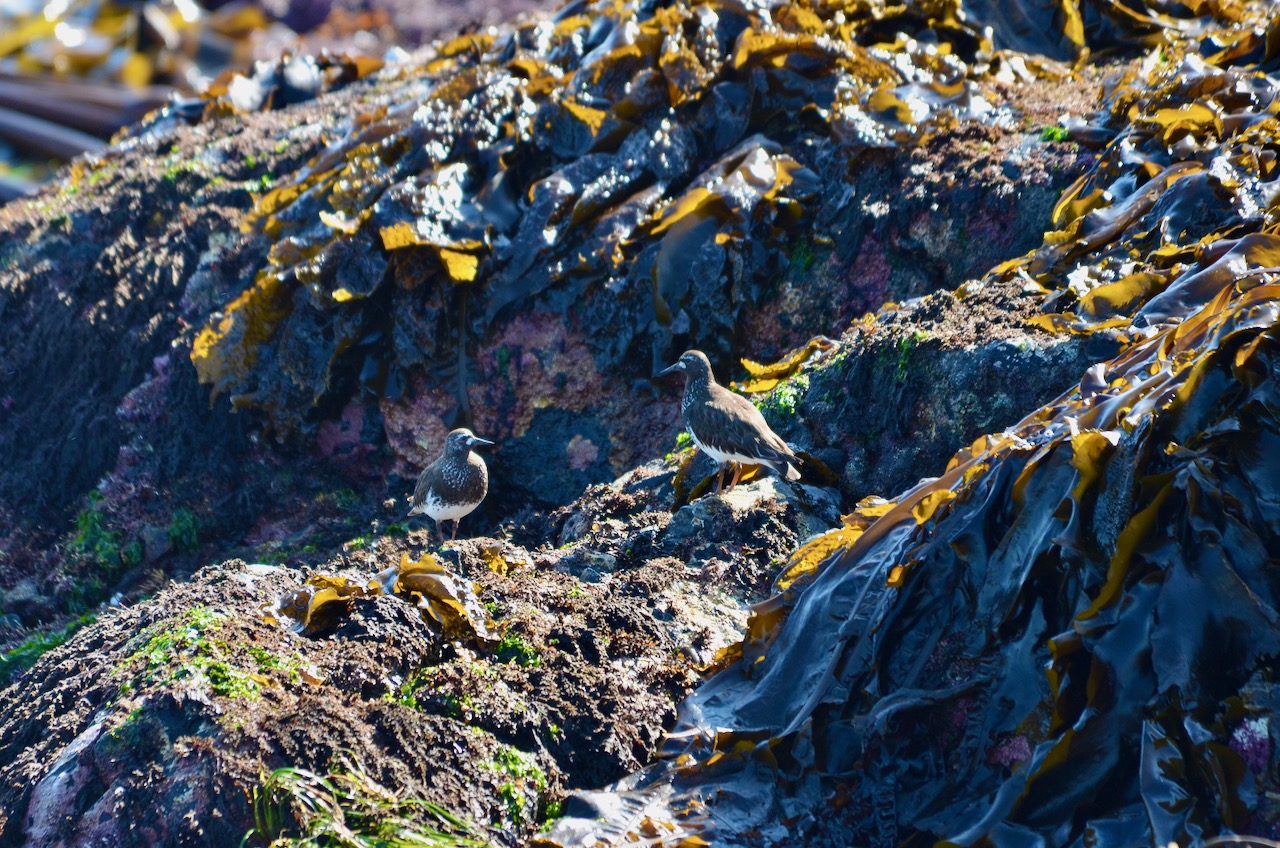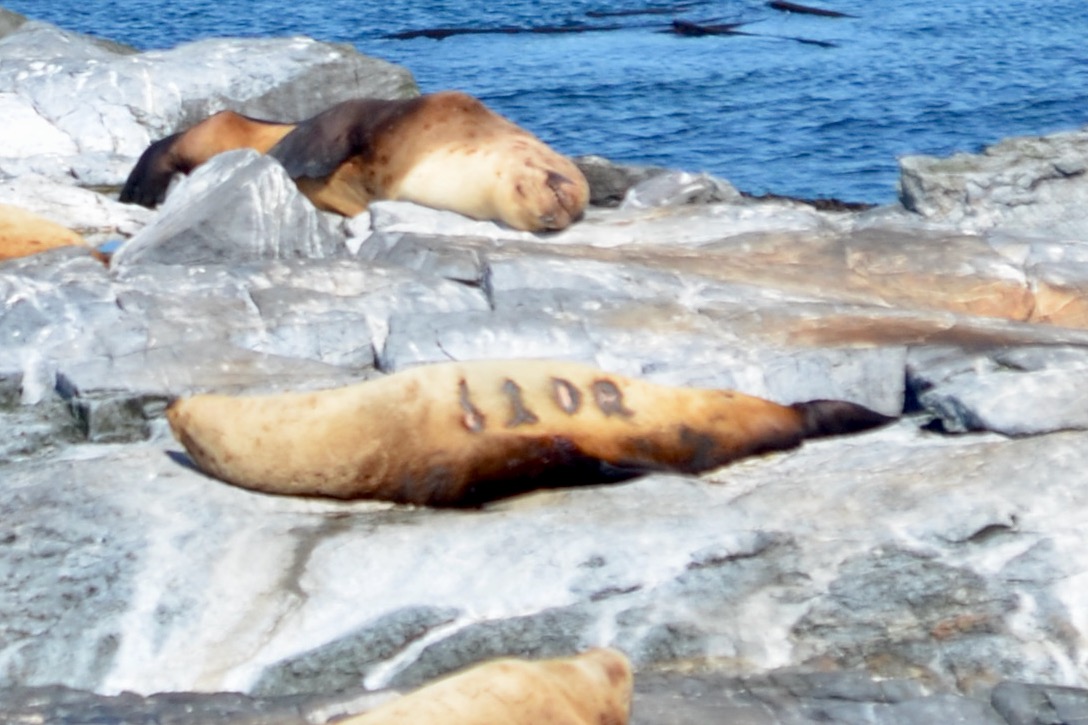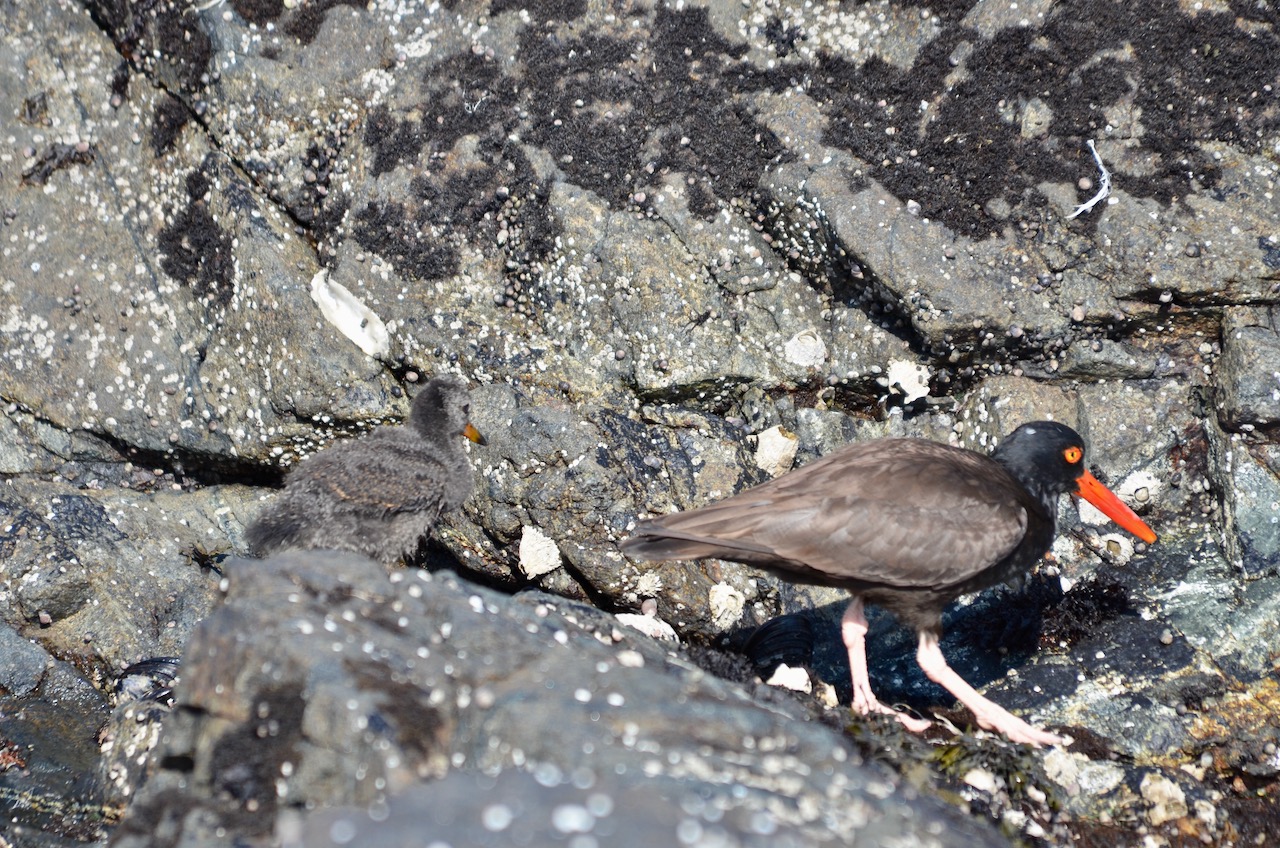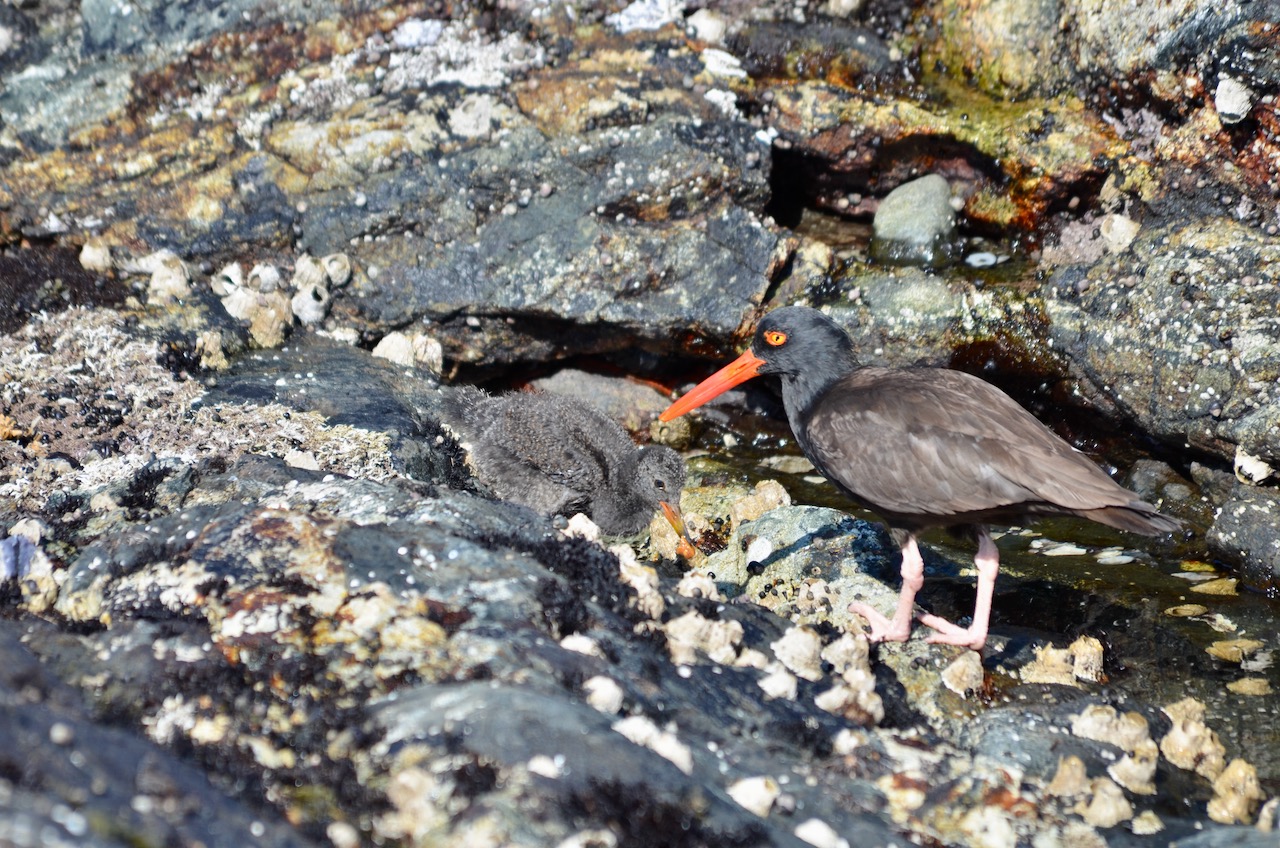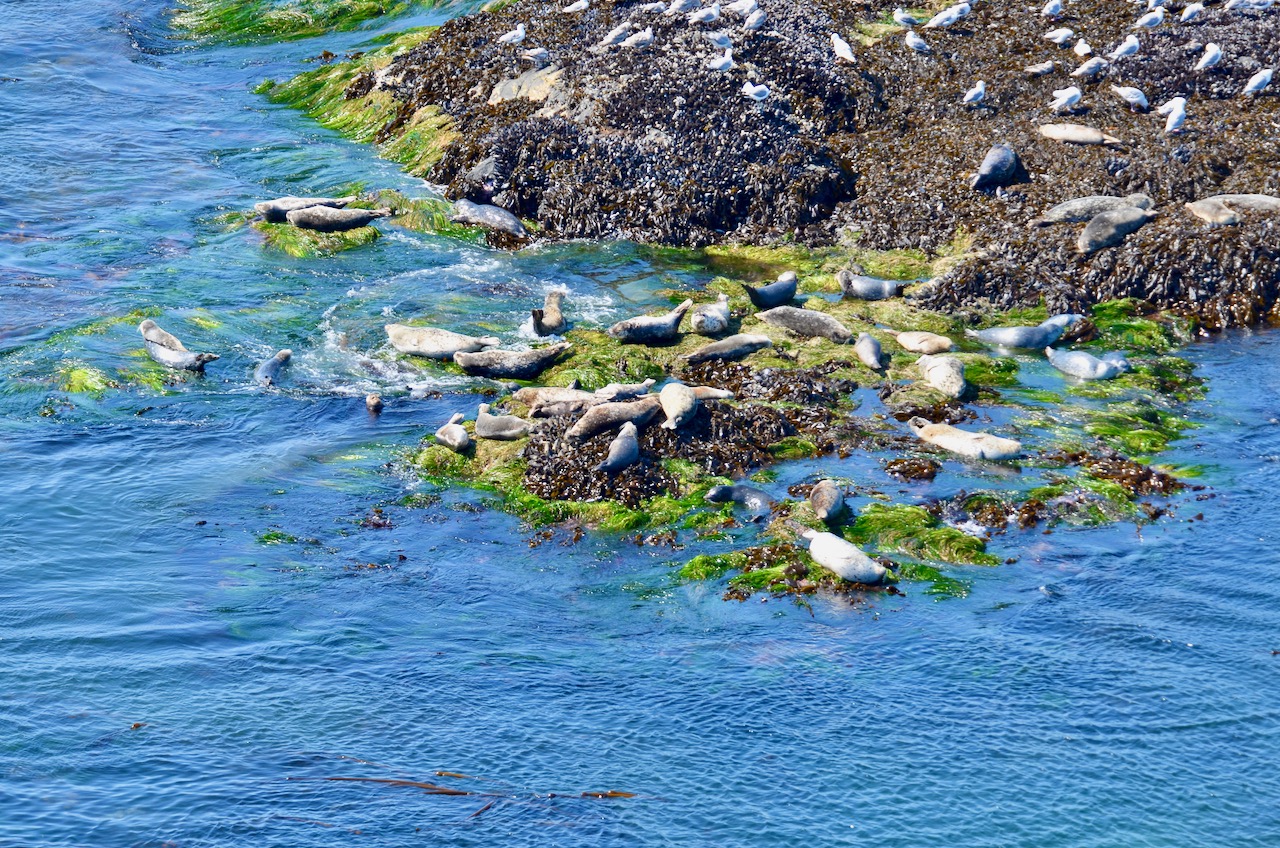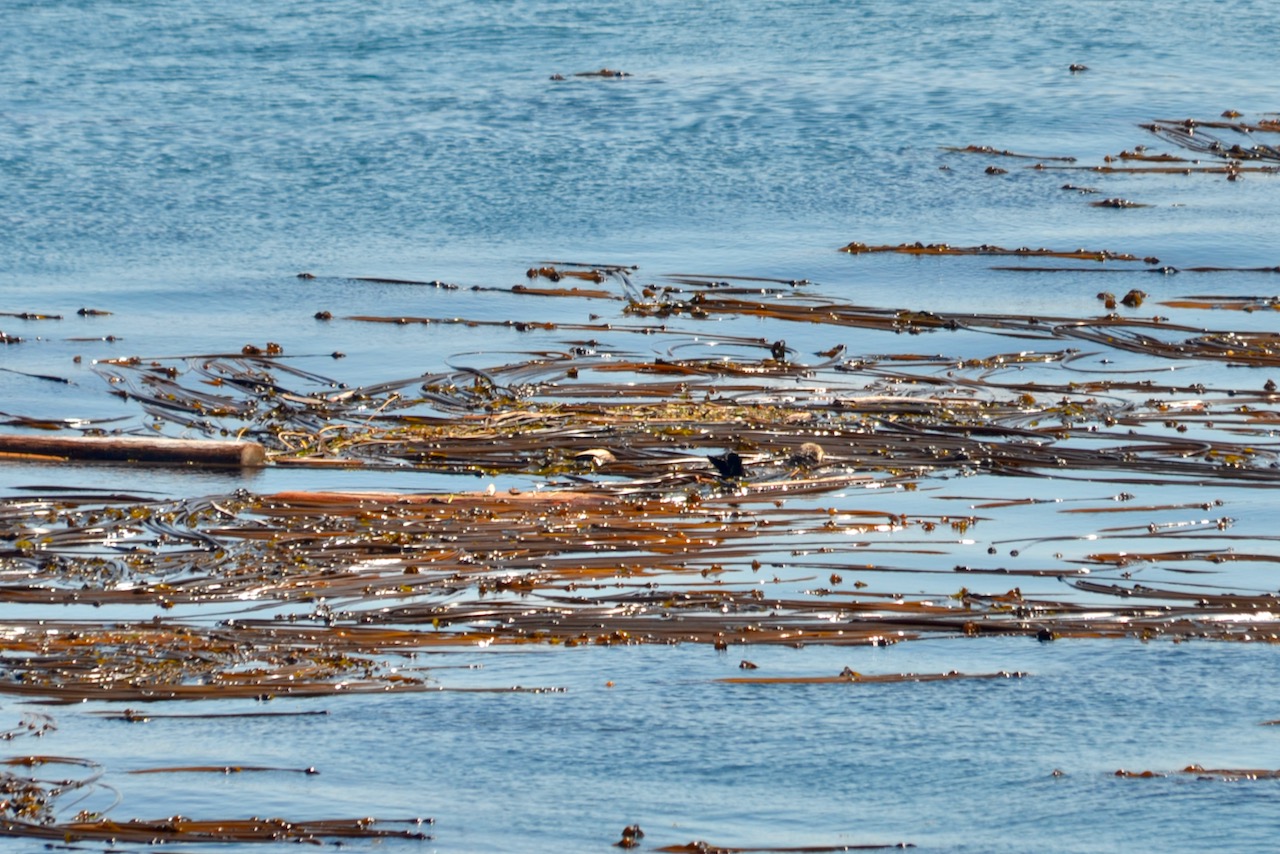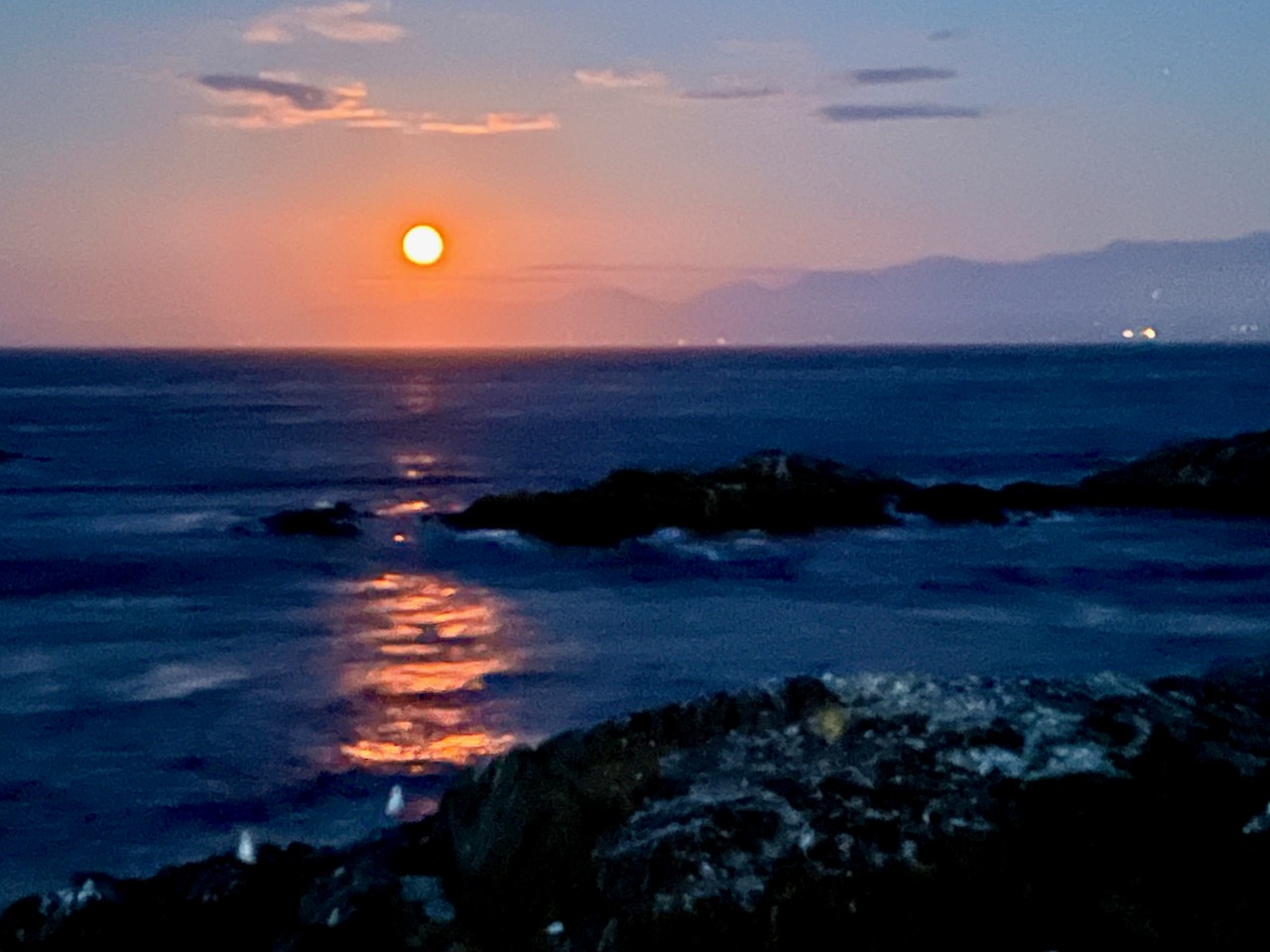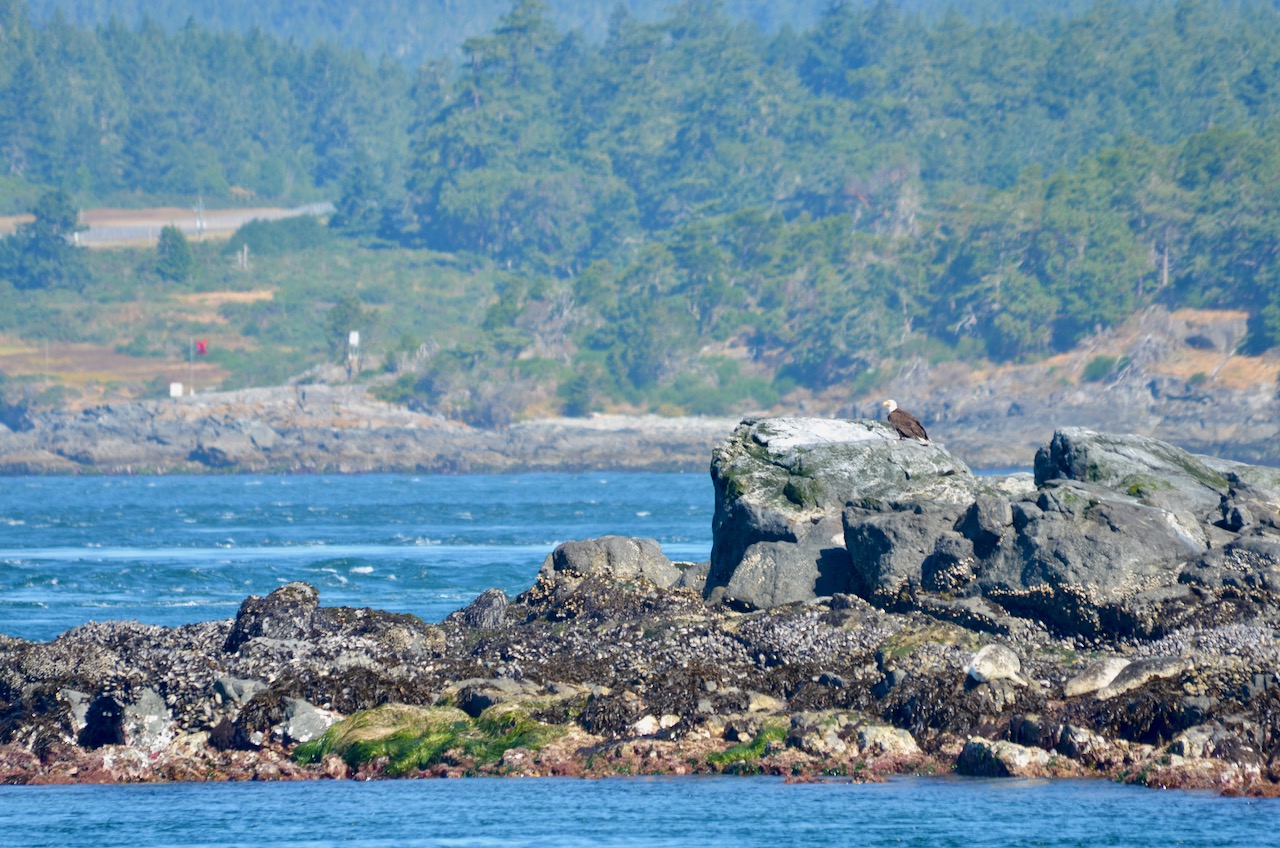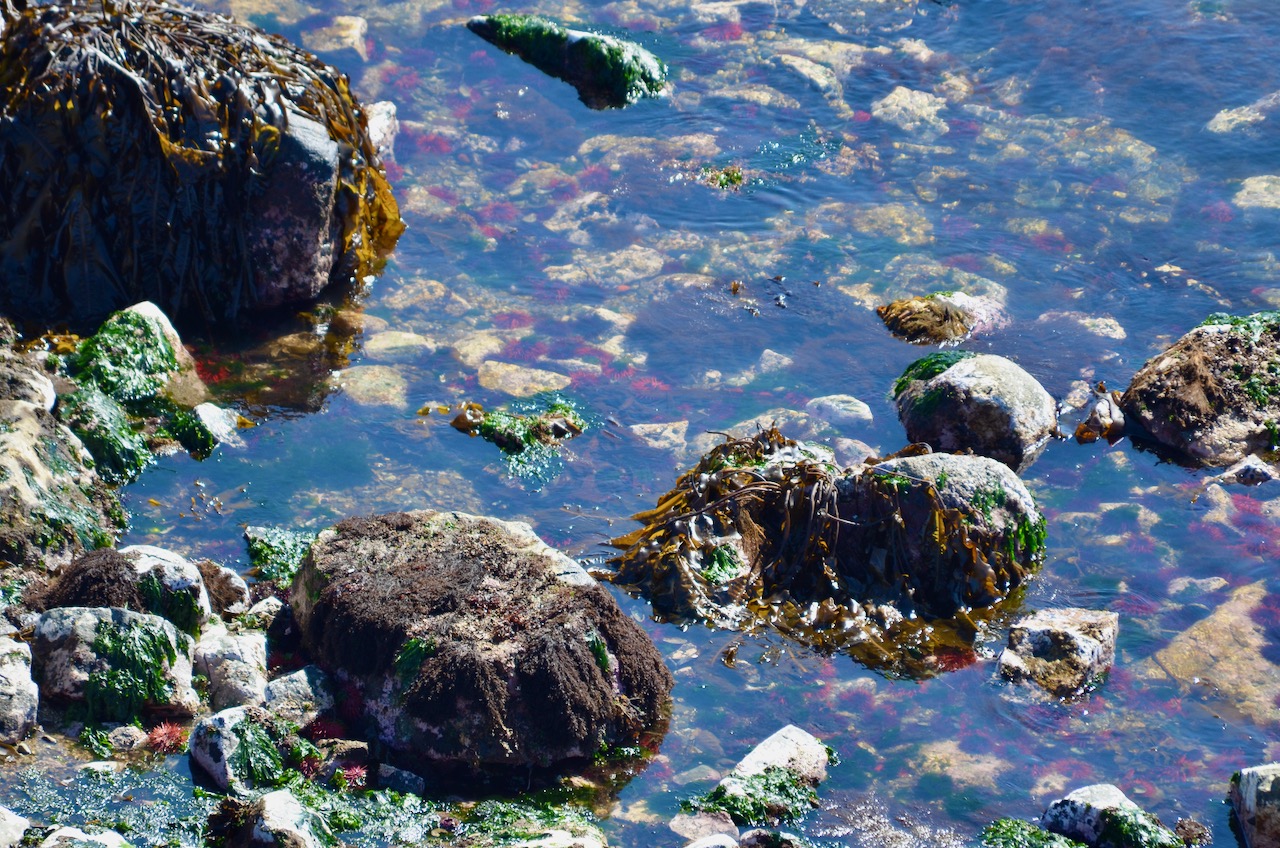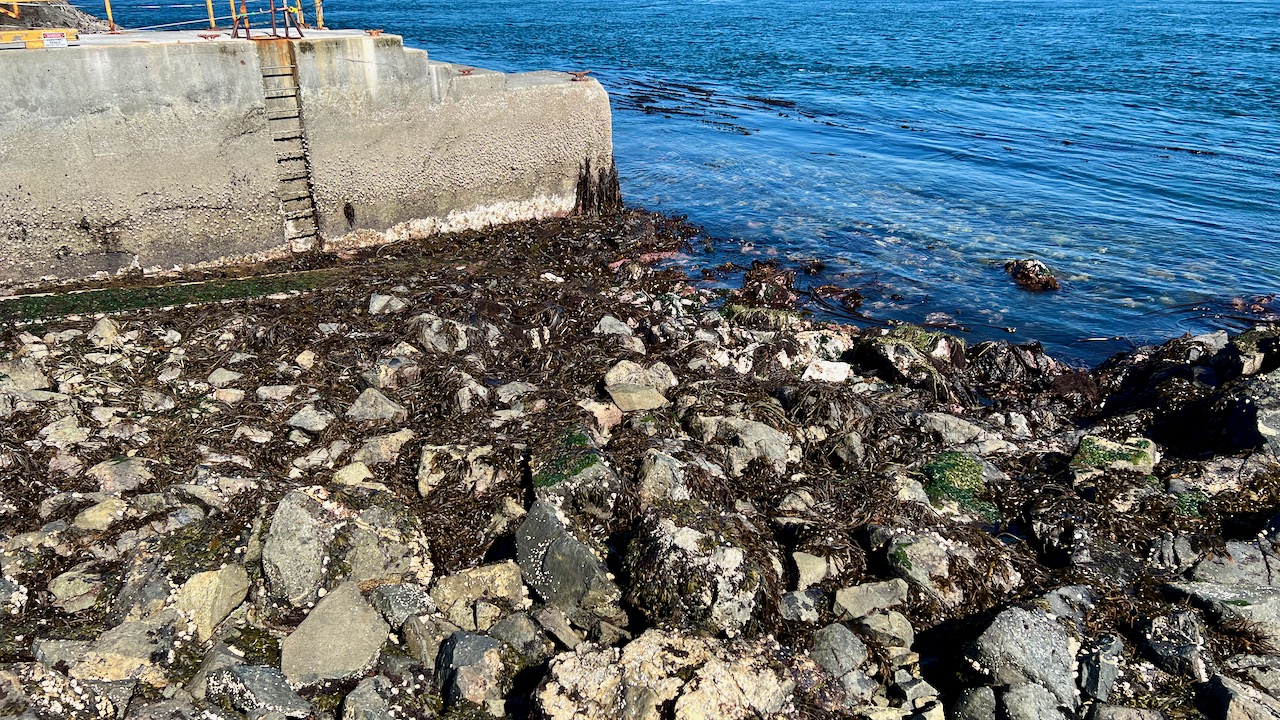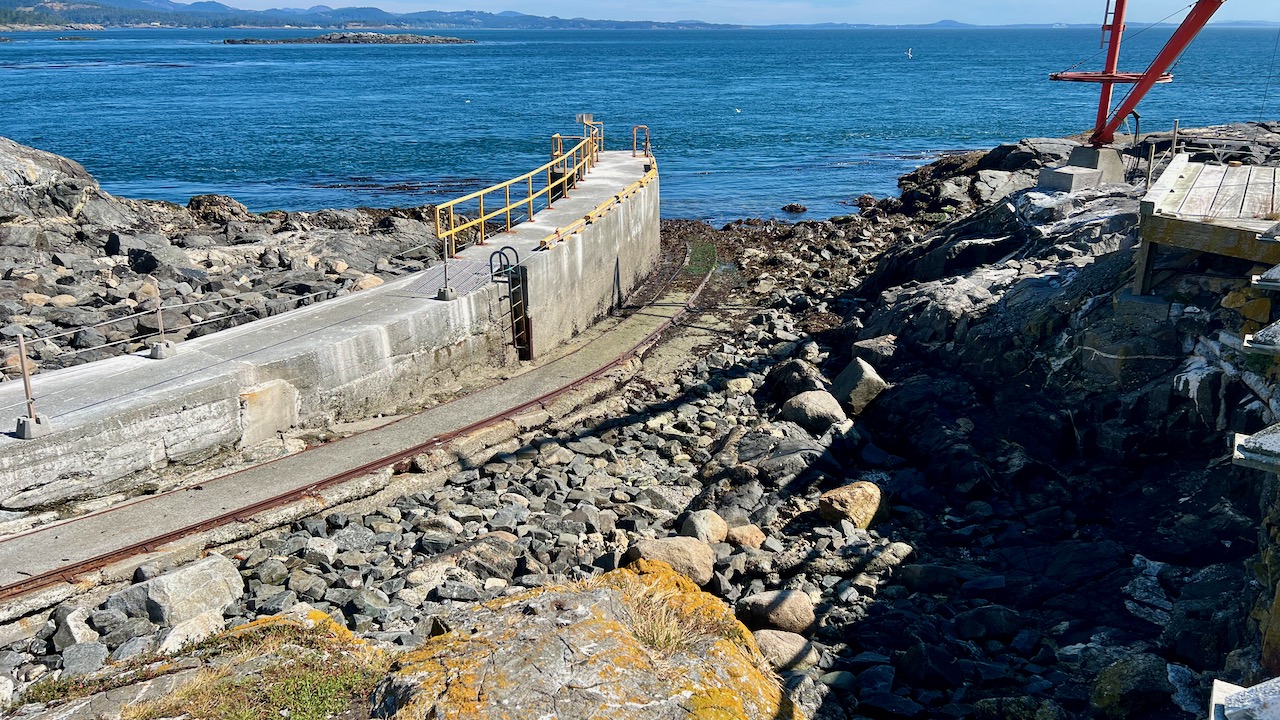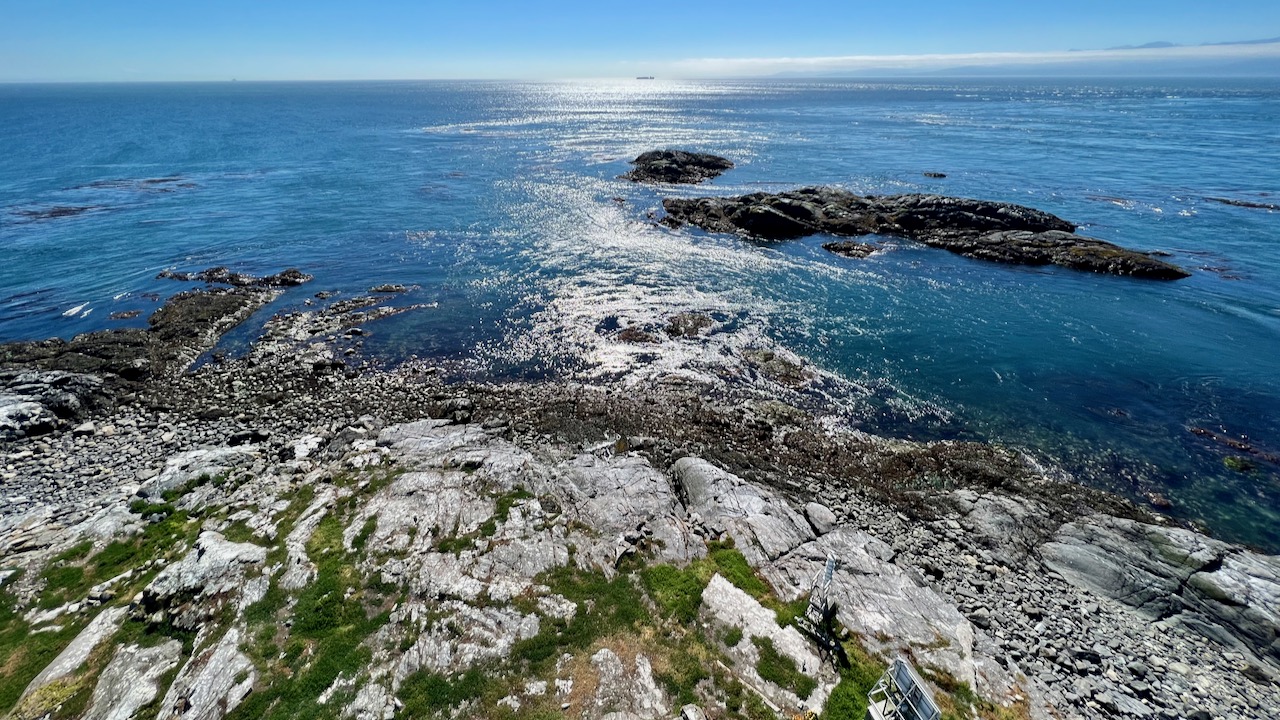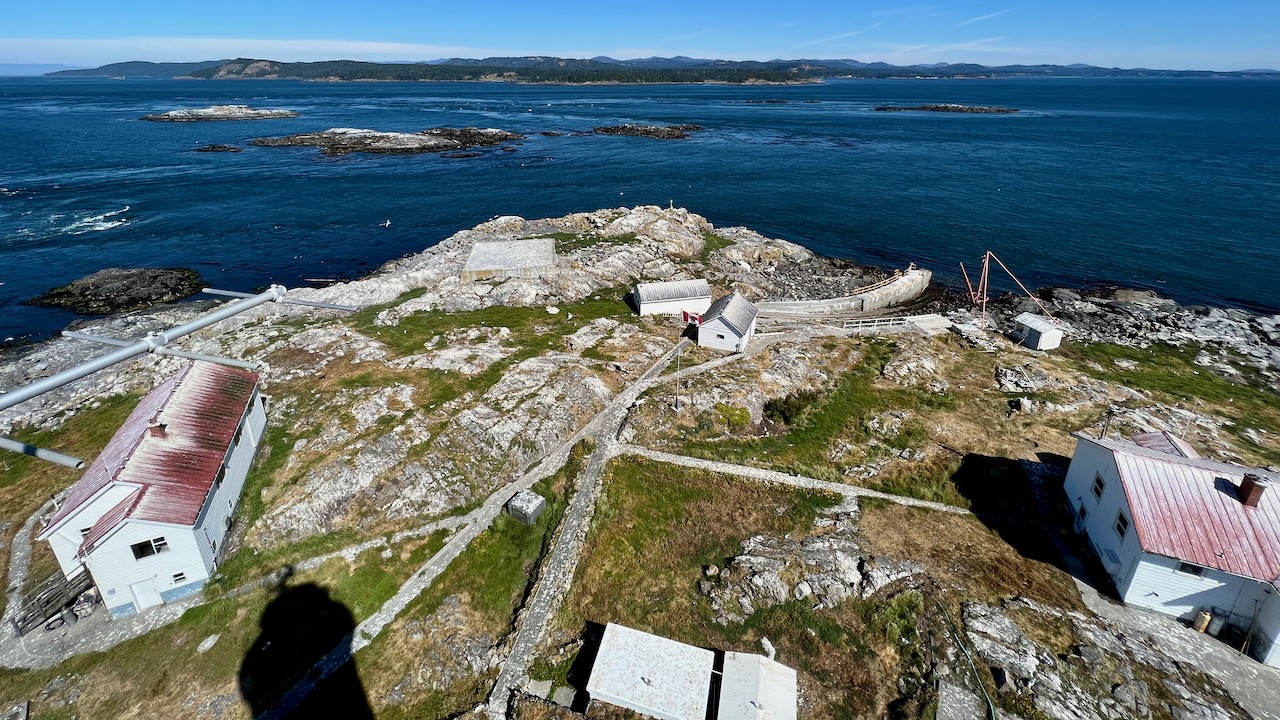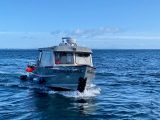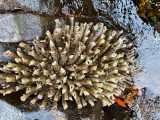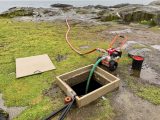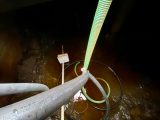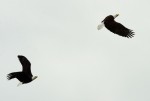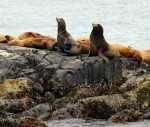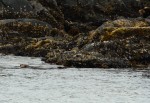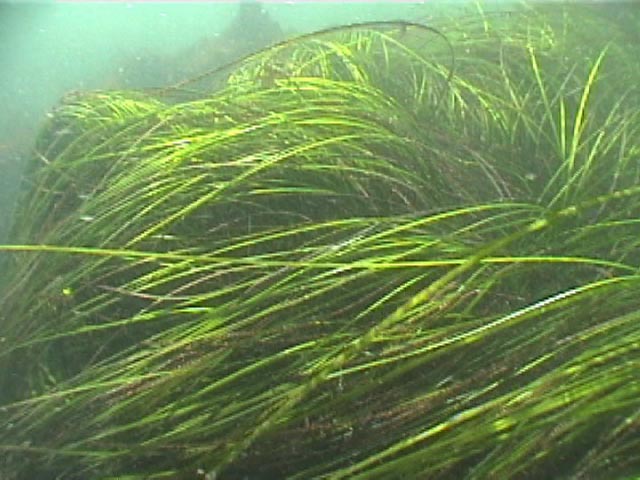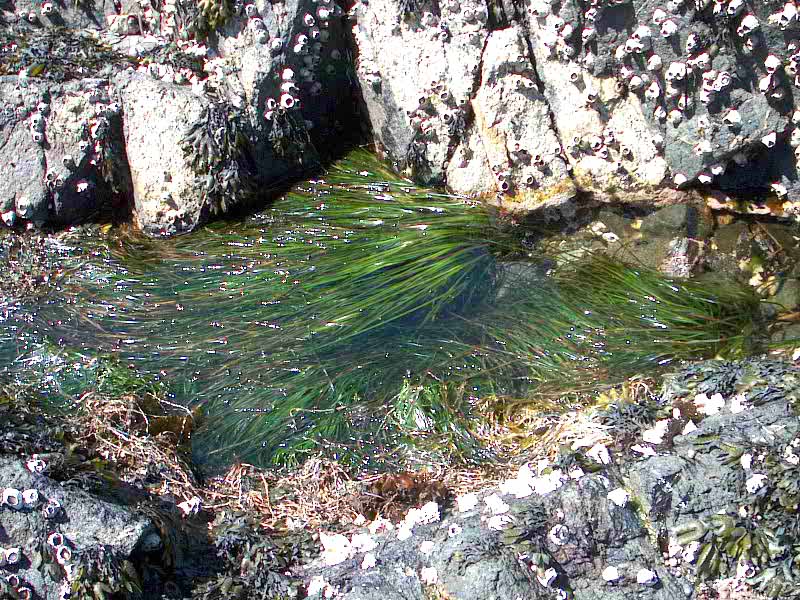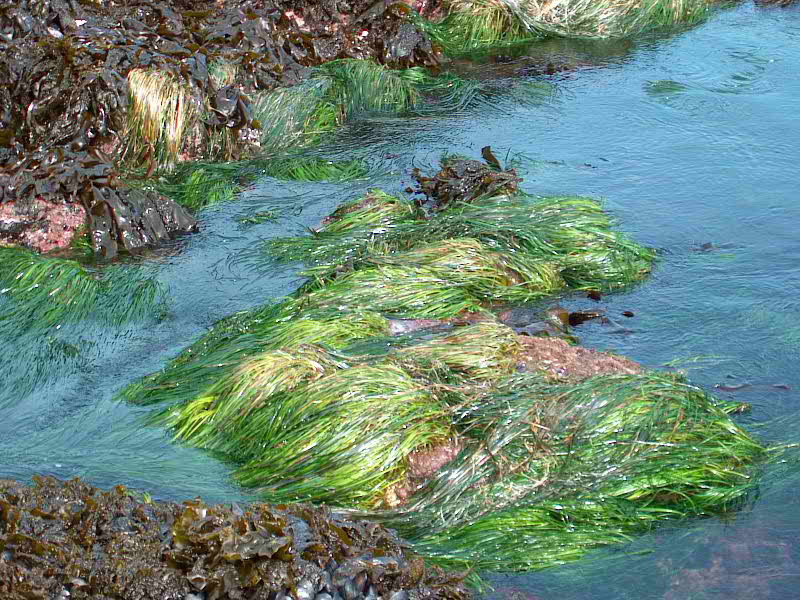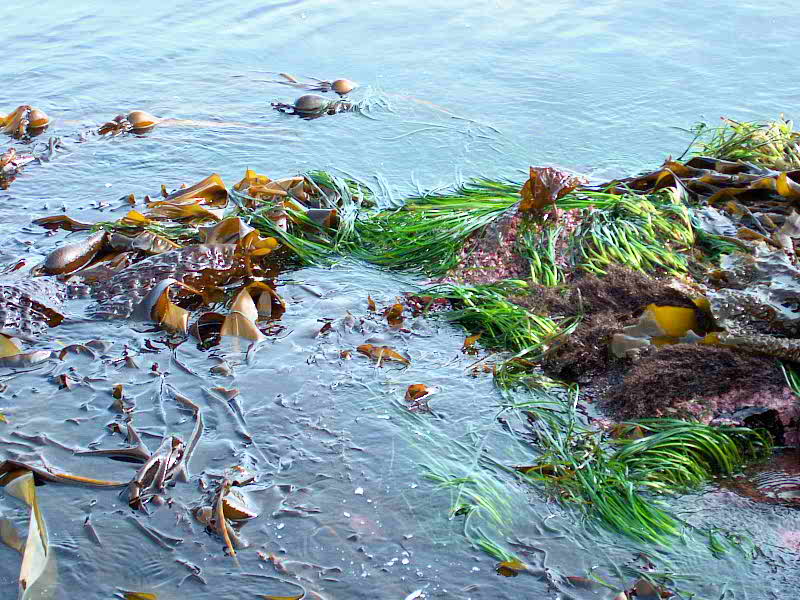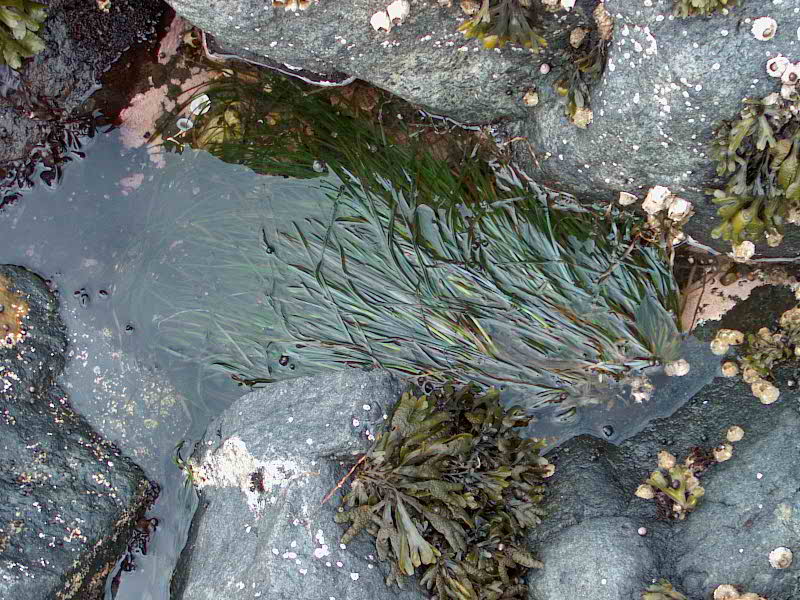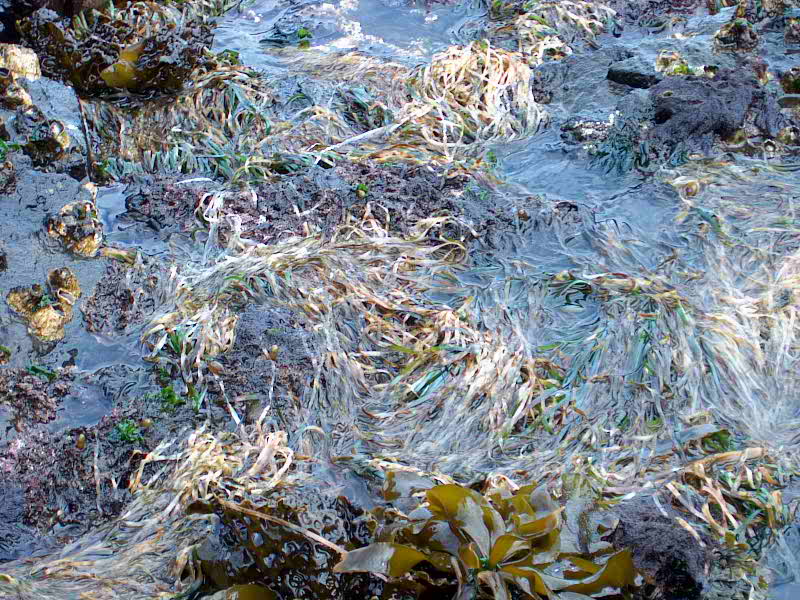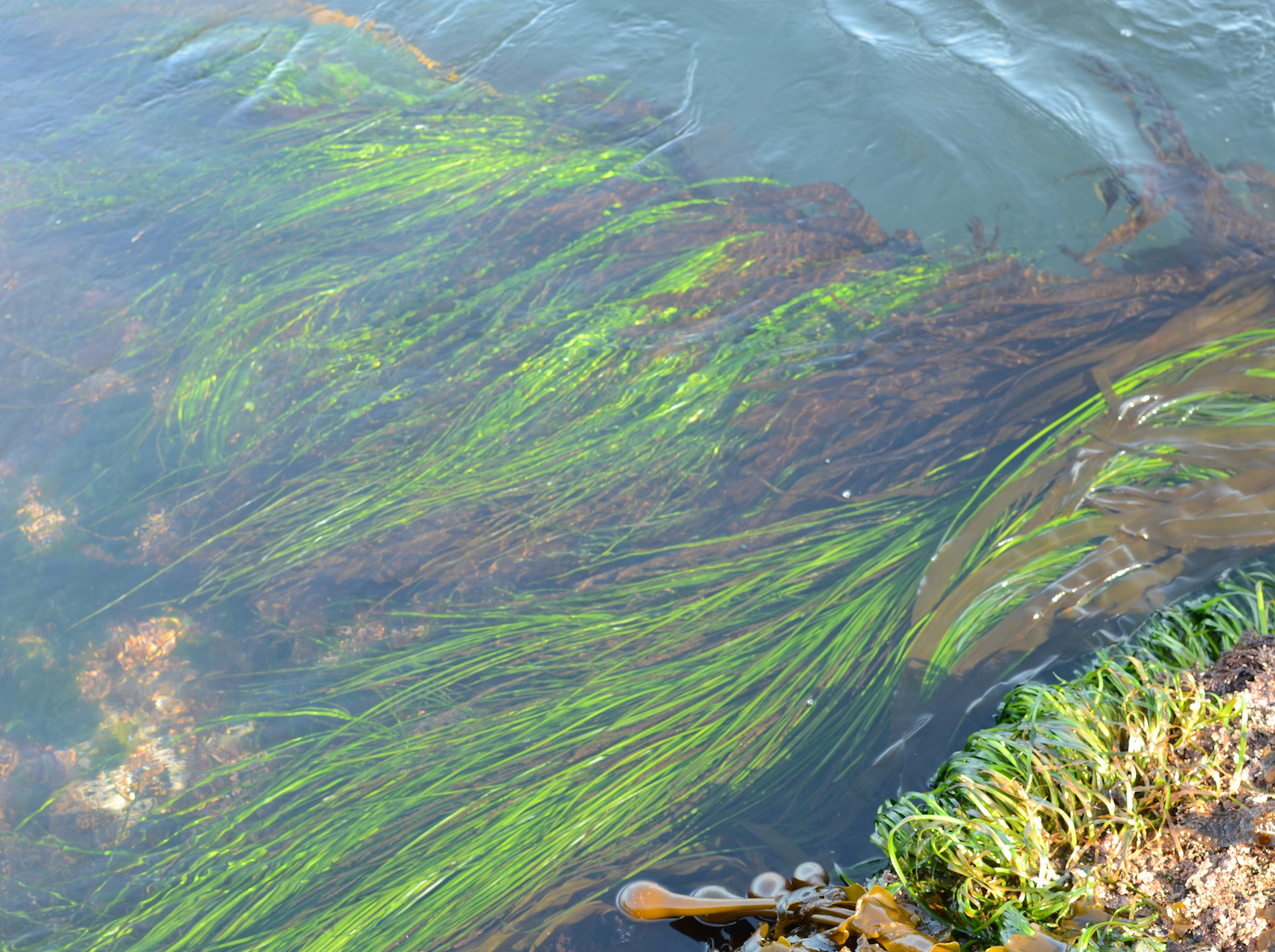Ecological Notes:
- The sea lion population is growing. For the past few days there have been 18 Steller sea lions hauled out on Middle Rocks. That is up from four sea lions one week ago. One of the sea lions has a brand. It appears to say 620R, although the researcher I contacted in Oregon mentioned it is what they call a bad brand and he was unable to determine the brand from the photos I sent. I will keep a look out for the sea lion and see if I can get a better view. The researcher will check his records to see if he can identify the sea lion and be able to record the resighting.
- The super moon on Wednesday night rose in the southeast at 10:00pm. It was a big bright orange orb that looked more like the rising sun, than the moon.
- Today’s extremely low tide of -0.2m or -0.7′ was at 10:13am. The overnight high tide at 00:55am was 3.0m or 9.8′. It is apparently the lowest tide in a decade. I was fascinated to see the extended edge of the water all around the many islands. I looked at the exposed intertidal zone from a distance and up on the jetty, so as not to disturb the many delicate species.
- See the photo gallery below for more ecological happenings from the past two days.
Weekly Census Results from July 13:
- Steller/Northern sea lions: 18
- Sea otter: 1
- Harbour seals: 133
- Bald eagles: 2 (1 juvenile and 1 adult)
- Canada geese: 9 (5 adults, 4 goslings)
- Black oystercatchers: 11 (8 adults, 3 chicks)
- Cormorant: 4
- Glaucous-winged gulls nesting on the main island: 247
- Glaucous-winged gull chicks: approximately 200 (it is hard to get an exact number due to their camouflage in the grass and hiding under their parents)
- Gulls not nesting (some glaucous-winged and some other species) on the south end of the main island and outer islands: 96
- Pigeon guillemots: 142
- Black turnstones: 2
- Western sandpiper: 2
Weather:
- Yesterday (July 13):
- Sky: Part Cloudy
- Wind: W 12-32 kts
- Sea: rippled, then up to 3′ waves in afternoon and evening
- Temperature Low 12oC, High 16oC
- Today (July 14):
- Sky: Part Cloudy
- Wind: W 15-27 kts
- Sea: rippled, then up to 2′ chop in afternoon
- Temperature Low 11oC, High 13oC
Visitors:
- No visitors
Facility Work:
- Scrubbed and squeegeed solar panels, routine tidying and checking infrastructure around the island.
Vessel Traffic:
- Many Canadian and American ecotour boats have been nearby and heading through the waters of the ecological reserve.
Here are photo highlights from the past two days. Click on the photos for larger views and captions.
- A gull brought back a meal for its chicks. The flounder was still alive, so the gull spent a while trying to kill it by stabbing the fish with its bill.
- The gull chick on the right appears to be practicing using their wings.
- Intertidal sights on Wednesday’s low tide. The mossy chiton in the centre of the photo is about 10cm long. There is also a lined chiton above and to the right of it. There are a variety of snails. Around the outside there is bull kelp, sea lettuce, and surf grass. Can you spot other species?
- Two black turnstones in the intertidal zone.
- Steller sea lions hauled out on Middle Rocks.
- Branded sea lion, which might read 620R. I submitted the sighting to a researcher in Oregon, who is looking into the hard to decipher brand.
- The oystercatcher chick near the jetty with one of its parents.
- The oystercatcher chick near the jetty eats a meal it just received from its parent.
- Harbour seals and non-nesting gulls on South Seal Rocks.
- Sea otter in the bull kelp east of the main island.
- Wednesday’s super buck moon rises in the southeast at 10:00pm. It was very large and orange near the horizon.
- A bald eagle perched on Turbine Rock. In the background on Bentinck Island, there is a red flag to signify active blasting at the Department of National Defence site. Although, I did not hear any blasting on Thursday.
- A very low tide view of the east bay, with lots of urchins near the surface.
- Thursday’s very low tide fully exposed the jetty.
- Another angle of the jetty which shows the boat tracks ending before the water’s edge in a big pile of bull kelp.
- A wide angle view from the lantern room of the lighthouse showing the exposed areas on the southeast side of the island created by the low tide. The rocky islands are the South Rocks.
- A wide angle view from the lantern room showing the exposed areas on the north side of the island created by the low tide.

